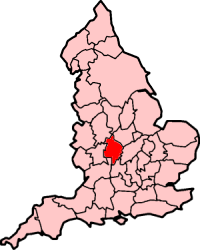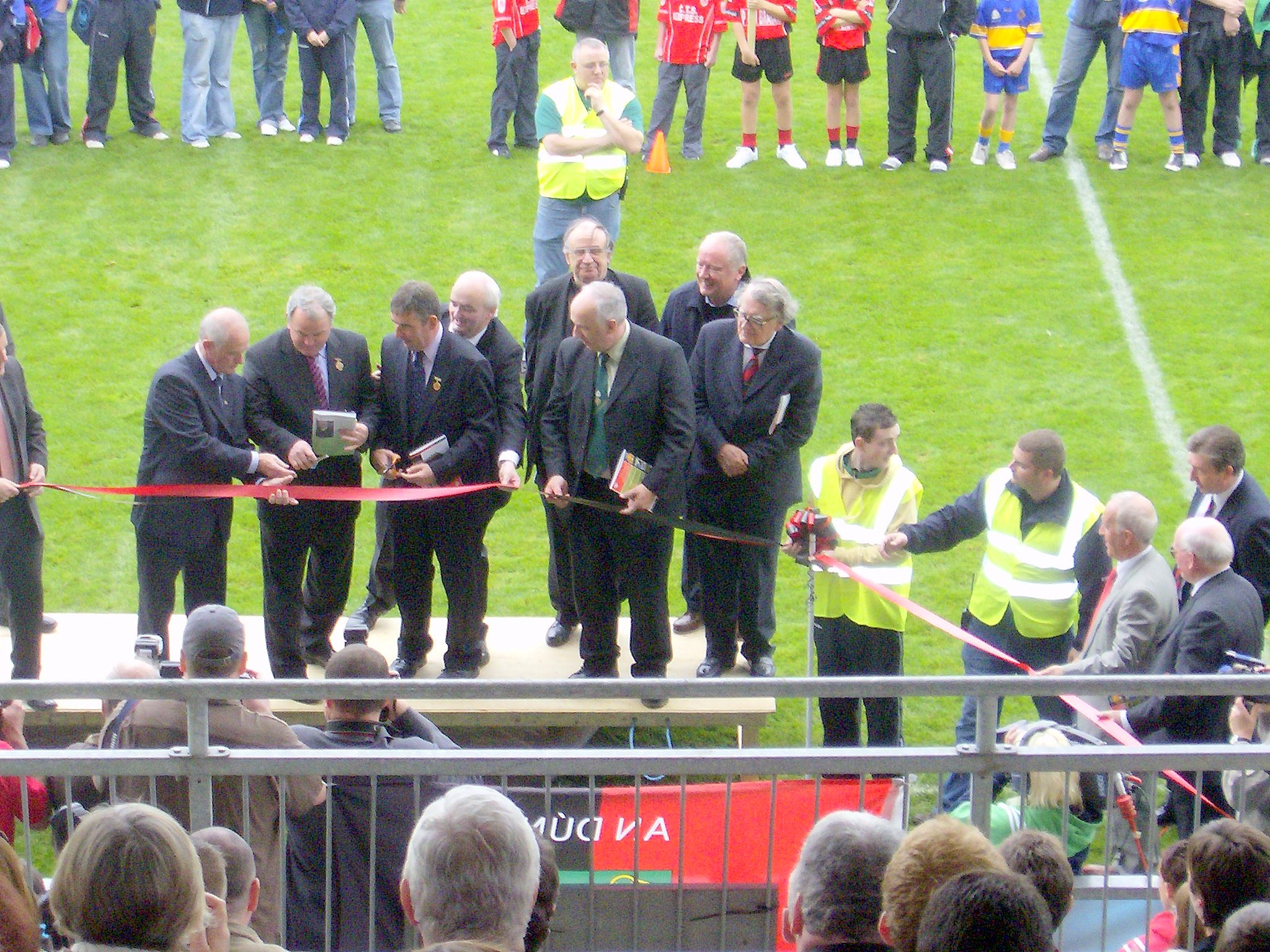|
2008 Nicky Rackard Cup
The 2008 Nicky Rackard Cup was the 4th annual third tier hurling competition organised by the Gaelic Athletic Association. Sligo beat Louth in the final. Format Ten county teams participated in the 2008 Nicky Rackard Cup, with Fingal (north Dublin) and "South Down" (Down excluding the Ards Peninsula) bringing the total to twelve. *Group 3A: Fingal, Longford, Louth *Group 3B: Fermanagh, Leitrim, South Down *Group 3C: Donegal, Monaghan, Tyrone *Group 3D: Cavan, Sligo, Warwickshire Each team in the group played each other once in the first phase. The top two teams in each group advanced to the quarter-finals. Group A Group B Group 3C Group 3D Knockout stage Bracket 2008 season facts Sligo, the eventual winners of the competition finished the preceding league tournament without a win, resulting in relegation to division 4 next year. Donegal, who won every game of the league, were eliminated from the Championship at the first (group stage) hurdl ... [...More Info...] [...Related Items...] OR: [Wikipedia] [Google] [Baidu] |
Nicky Rackard Cup
The Nicky Rackard Cup (; often referred to as the Rackard Cup) is the fourth tier of the All-Ireland Senior Hurling Championship. Each year, the champion team in the Nicky Rackard Cup is promoted to the Christy Ring Cup, and the lowest finishing team is relegated to the Lory Meagher Cup. The Nicky Rackard Cup, which was introduced for the 2005 season, is a recent initiative in providing a meaningful championship for third tier teams deemed "too weak" for any higher grades. The winners of the championship receive the Nicky Rackard Cup, named after former Wexford hurler Nicky Rackard regarded as one of the greatest hurlers of all time. In the 2022 season, Tyrone were the Nicky Rackard Cup champions. History and format Inauguration of the competition In 2003 the Hurling Development Committee (HDC) was charged with restructuring the entire hurling championship. The committee was composed of chairman Pat Dunny (Kildare), Liam Griffin (Wexford), P. J. O'Grady (Limerick), ... [...More Info...] [...Related Items...] OR: [Wikipedia] [Google] [Baidu] |
Warwickshire GAA
The Warwickshire County Board of the Gaelic Athletic Association (GAA) (or Warwickshire GAA) is one of the county boards outside Ireland, and is responsible for Gaelic games in Warwickshire. The county board is also responsible for the Warwickshire county teams. Warwickshire have won the Lory Meagher Cup two times. The first victory was in 2013 beating Longford in the hurling final on 8 June 2013 at Croke Park, 2-16 to 0-10. The second in 2017 beating Leitrim on the 10 June 2017 at Croke Park, 0-17 to 0-11. Warwickshire again beat Longford to win the Allianz NHL Div 3B hurling final on 4 April 2015 in Ratoath, Meath. Final score: Warwickshire 1-15, Longford 2-10. Club roll of honour Hurling Clubs Clubs contest the Warwickshire Senior Hurling Championship. County team In 2005 Warwickshire fielded a hurling team in the Nicky Rackard Cup for the first time. The team was quite successful in 2006, winning one game against Monaghan and losing to Longford and narrowly to ... [...More Info...] [...Related Items...] OR: [Wikipedia] [Google] [Baidu] |
Páirc Esler
Páirc Esler ( , ; also ga, Páirc an Iúir ) is a GAA stadium in Newry, County Down, Northern Ireland. It is the home of the Down Gaelic football and hurling teams and the Newry Shamrocks GAA club. The ground has a capacity of about 20,000. History The ground was named after Fr. (later Archdeacon) Hugh Esler (d. 1983), a Catholic priest and Ballynahinch native credited with reinvigorating interest in Gaelic football in Newry in the 1930s–50s, and with securing the grounds that was to later become Páirc Esler. Renovation The ground has undergone major redevelopment work, with new stands, floodlights, new pitch all added in 2006–2007. From 1999 to 2004 no senior intercounty championship matches were played at the venue. After the development of a new terrace at the canal end of the ground and a new stand on the south side of the ground, Down hosted the All Ireland Champions, Tyrone, in round 2 of the football championship qualifiers. The following year both Fermanagh a ... [...More Info...] [...Related Items...] OR: [Wikipedia] [Google] [Baidu] |
Parnell Park
Parnell Park is a GAA stadium in Donnycarney, Dublin, Ireland with a capacity of 8,500. It is the home of the Dublin GAA hurling, football, camogie and ladies' football teams at all levels of competition. The ground is used by Dublin's inter-county teams mainly during home National Hurling League & All-Ireland Senior Hurling Championship games and as a training ground, with most National Football League and All-Ireland Senior Football Championship games played in Croke Park Croke Park ( ga, Páirc an Chrócaigh, ) is a Gaelic games stadium in Dublin, Ireland. Named after Archbishop Thomas Croke, it is referred to as Croker by GAA fans and locals. It serves as both the principal national stadium of Ireland and h .... However, Dublin county championships and other competitions also take place in Parnell Park every year. Parnell Park also serves as the headquarters of the Dublin County Board. Design Parnell Park follows the standard four-sided design of most stadiums ... [...More Info...] [...Related Items...] OR: [Wikipedia] [Google] [Baidu] |
South Down GAA
The Down county hurling team represents Down GAA, the county board of the Gaelic Athletic Association, in the Gaelic sport of hurling. The team competes in the Christy Ring Cup and the National Hurling League. Down's home ground is Páirc Esler, Newry. The team's manager is Ronan Sheehan. The team last won the Ulster Senior Championship in 1997, but has never won the All-Ireland Senior Championship or the National League. History Down played in the Leinster Minor Hurling Championship for three years in the 1970s, even playing Antrim in an unusual Leinster semi-final at Croke Park in 1979. Although Down had not won the All-Ireland B championship in four final appearances, when the Ulster Senior Hurling Championship was revived, Down won titles in 1992, 1995 and 1997, losing the All-Ireland semi-finals by 14, 11 and 16 points. Down defeated Kilkenny in a Division 1 match in 1993 by a scoreline of 1–12 to 1–11. Down hurlers won the Christy Ring Cup for the first time in 2 ... [...More Info...] [...Related Items...] OR: [Wikipedia] [Google] [Baidu] |
Colours Of Down
Color (American English) or colour (British English) is the visual perceptual property deriving from the spectrum of light interacting with the photoreceptor cells of the eyes. Color categories and physical specifications of color are associated with objects or materials based on their physical properties such as light absorption, reflection, or emission spectra. By defining a color space, colors can be identified numerically by their coordinates. Because perception of color stems from the varying spectral sensitivity of different types of cone cells in the retina to different parts of the spectrum, colors may be defined and quantified by the degree to which they stimulate these cells. These physical or physiological quantifications of color, however, do not fully explain the psychophysical perception of color appearance. Color science includes the perception of color by the eye and brain, the origin of color in materials, color theory in art, and the physics of electromagn ... [...More Info...] [...Related Items...] OR: [Wikipedia] [Google] [Baidu] |
Colours Of Tyrone
Color (American English) or colour (British English) is the visual perceptual property deriving from the spectrum of light interacting with the photoreceptor cells of the eyes. Color categories and physical specifications of color are associated with objects or materials based on their physical properties such as light absorption, reflection, or emission spectra. By defining a color space, colors can be identified numerically by their coordinates. Because perception of color stems from the varying spectral sensitivity of different types of cone cells in the retina to different parts of the spectrum, colors may be defined and quantified by the degree to which they stimulate these cells. These physical or physiological quantifications of color, however, do not fully explain the psychophysical perception of color appearance. Color science includes the perception of color by the eye and brain, the origin of color in materials, color theory in art, and the physics of electro ... [...More Info...] [...Related Items...] OR: [Wikipedia] [Google] [Baidu] |
Colours Of Sligo
Color (American English) or colour (British English) is the visual perceptual property deriving from the spectrum of light interacting with the photoreceptor cells of the eyes. Color categories and physical specifications of color are associated with objects or materials based on their physical properties such as light absorption, reflection, or emission spectra. By defining a color space, colors can be identified numerically by their coordinates. Because perception of color stems from the varying spectral sensitivity of different types of cone cells in the retina to different parts of the spectrum, colors may be defined and quantified by the degree to which they stimulate these cells. These physical or physiological quantifications of color, however, do not fully explain the psychophysical perception of color appearance. Color science includes the perception of color by the eye and brain, the origin of color in materials, color theory in art, and the physics of electr ... [...More Info...] [...Related Items...] OR: [Wikipedia] [Google] [Baidu] |
Colours Of Louth
Color (American English) or colour ( British English) is the visual perceptual property deriving from the spectrum of light interacting with the photoreceptor cells of the eyes. Color categories and physical specifications of color are associated with objects or materials based on their physical properties such as light absorption, reflection, or emission spectra. By defining a color space, colors can be identified numerically by their coordinates. Because perception of color stems from the varying spectral sensitivity of different types of cone cells in the retina to different parts of the spectrum, colors may be defined and quantified by the degree to which they stimulate these cells. These physical or physiological quantifications of color, however, do not fully explain the psychophysical perception of color appearance. Color science includes the perception of color by the eye and brain, the origin of color in materials, color theory in art, and the physics of elec ... [...More Info...] [...Related Items...] OR: [Wikipedia] [Google] [Baidu] |
Colours Of Monaghan
Color (American English) or colour (British English) is the visual perceptual property deriving from the spectrum of light interacting with the photoreceptor cells of the eyes. Color categories and physical specifications of color are associated with objects or materials based on their physical properties such as light absorption, reflection, or emission spectra. By defining a color space, colors can be identified numerically by their coordinates. Because perception of color stems from the varying spectral sensitivity of different types of cone cells in the retina to different parts of the spectrum, colors may be defined and quantified by the degree to which they stimulate these cells. These physical or physiological quantifications of color, however, do not fully explain the psychophysical perception of color appearance. Color science includes the perception of color by the eye and brain, the origin of color in materials, color theory in art, and the physics of electro ... [...More Info...] [...Related Items...] OR: [Wikipedia] [Google] [Baidu] |




